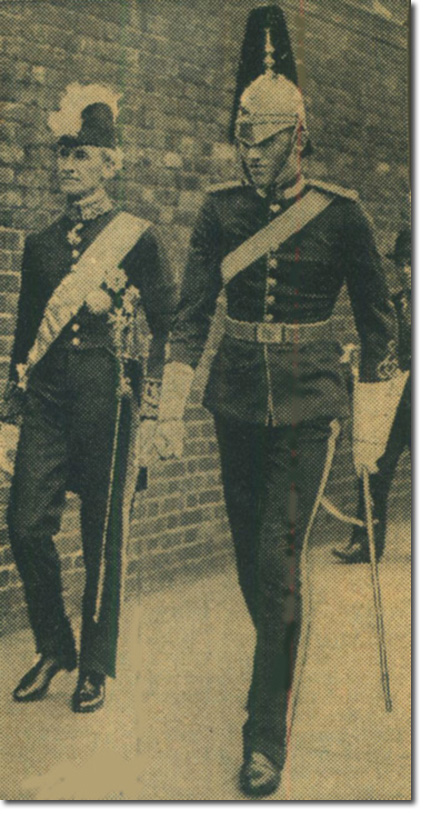|
|


|
|
Alexander Edward John Bulwer-Lytton, Viscount Knebworth was born on 11 March 1910. He was the son of Victor Alexander George Robert Bulwer-Lytton, 2nd Earl of Lytton and Pamela Chichele-Plowden. The 2nd Earl was the Governor of Bengal 1922-27, and grandfather, the 1st Earl, was Viceroy of India 1876-80, during the great famine, and the 2nd Afghan War. Great-grandfather was the famous novelist, Edward Bulwer-Lytton. Alexander graduated from Trinity College, Cambridge with a Bachelor of Arts. He was styled as Viscount Knebworth between 1933 and 1942. He is seen here in Queen's Bays dress uniform in 1934. He died on 4 July 1942 at age 32 at El Alamein, Egypt, killed in action.
On 27 May 1942 Major Viscount Knebworth was leading A Squadron's Crusader tanks near Bir Hacheim against a huge mass of enemy columns 3000 yards away, closing to 1500 yards. Fifteen enemy guns were destroyed by the Bays in this battle. The next day they moved on to Aslagh and on the 29th his tank was put out of action. On 6 June, A and B Squadrons were merged under Major Weld and Viscount Knebworth went back to organise another squadron from recovered Crusader tanks. He rejoined the others on 10 June. They were heavily engaged on 12 June at Nadurat el Ghescheuasc. On the 13th they were north of Knightsbridge to help the Scots Guards and that evening Knebworth's tank was hit, wounding his operator. Heavy fighting ensued on the 14th when the Bays were facing more than 40 Panzers and later 70 enemy tanks with only 10 of their own. They maintained their position until dark but withdrew to the Acroma Gap at midnight. They had fought the battle of Gazala for 19 days. On 26 June Viscount Knebworth was put in charge of a composite squadron of Honey and Crusader Tanks made up of half of B Squadron and a squadron of 4th Hussars. They were in action continuously up to the end of June, and in early July they were operating on the Miteiriya Ridge, west of El Alamein. By the 4th July they were down to one Crusader and 3 Honeys. They went into the attack on enemy infantry and artillery in a wadi. They fired their machine-guns as they approached and caused many Germans to surrender. An enemy anti-tank gun destroyed one tank, and then as Knebworth went to protect it his tank was also hit. Although he escaped the burning vehicle he was shot on his way back. He was mortally wounded and died that day. Sergeant Barker wrote: 'Near a stone cairn, we dug his grave. I emptied his pockets. He had everything a soldier should carry and generally doesn't. Then, wrapping him in a blanket, we laid him to rest. There was no clergyman or officer, but just four of his men. We commended him to God; then gave him his last salute. He was a splendid soldier and a good man.' |
Armed Forces | Art and Culture | Articles | Biographies | Colonies | Discussion | Glossary | Home | Library | Links | Map Room | Sources and Media | Science and Technology | Search | Student Zone | Timelines | TV & Film | Wargames Library | Search | TV & Film | Wargames
